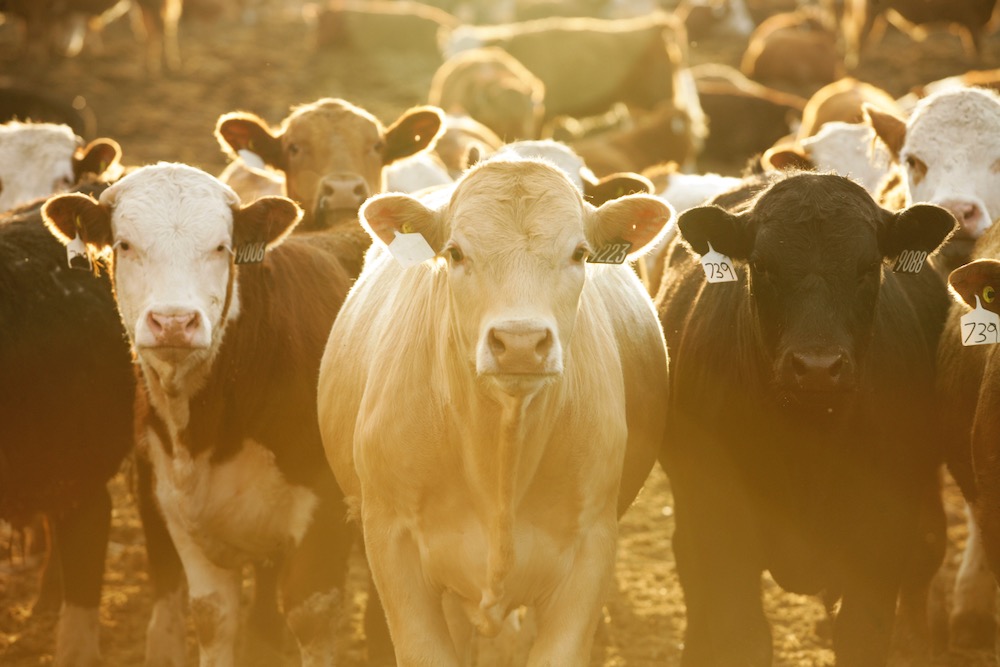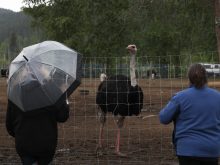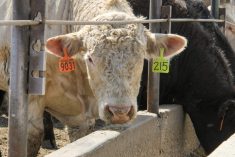Manitoba’s feather sectors and backyard flock owners are being reminded to take the necessary precautions now that highly pathogenic avian flu has been confirmed in wild birds found last week.
The province’s natural resources department reported Wednesday that the Canadian Wildlife Health Cooperative (CWHC) has confirmed the presence of high-path H5N1 avian flu in two samples from birds found in the western part of the province.
One of the samples taken from “several” birds collected near Waskada — about 100 km south of Virden near the North Dakota border — and a sample taken from a bald eagle found in the Dauphin area have each tested positive, the province said.
Read Also

U.S. livestock: Cattle futures drop on Trump call for lower prices
Cattle futures on the Chicago Mercantile Exchange dropped sharply on Wednesday, reacting to comments from United States President Donald Trump…
The Waskada samples were taken from a group of lesser snow geese that “experienced mortalities,” the province said, while the bald eagle at Dauphin was “observed with neurologic signs and humanely euthanized.”
Manitoba Agriculture’s veterinary diagnostic services unit found the two samples to be positive on initial screening tests, and the results were later confirmed in tests at the National Centre for Foreign Animal Disease in Winnipeg.
Several premises with commercial poultry and backyard flocks have been identified within 50 km of the affected areas for “further follow up” as needed, the province said.
Backyard flocks in particular often have access to outdoor pens or free range — meaning those birds have a “high probability of contact” with wild birds that may be contaminated with the virus, the province said. Thus, it encouraged small flock owners to confine their birds indoors, if at all possible, during this “high-risk period of wild bird migration.”
Commercial-level poultry and egg producers, meanwhile, are urged to follow “strict” biosecurity protocols on their premises, including precautions for visits from farm service companies and others.
The province on Wednesday reiterated the risk of avian flu to human health is low and there are no known cases of transmission of this strain of the virus from birds to humans in North America, nor does H5N1 pose a food safety risk.
According to the Canadian Food Inspection Agency, in the rare cases where people catch avian flu, it’s most likely to have been transmitted via close human contact with live infected birds, or in “heavily contaminated” environments. No evidence is known to suggest consumption of cooked poultry or eggs transmits avian flu to people.
The confirmed cases in Manitoba mean each of Canada’s 10 provinces has now confirmed cases of avian flu in wild birds and/or non-commercial or backyard flocks in this latest run of high-path avian flu through North America.
Avian flu has also been seen in 31 commercial Canadian poultry flocks so far this year, across six provinces: 13 in southern Ontario, 11 in central and southern Alberta, three in Quebec’s Estrie, two in western Nova Scotia and one each in west-central Saskatchewan and in B.C.’s Okanagan.
CFIA also continues setting up primary control zones (PCZs) surrounding infected premises, in which all movement of domestic birds and poultry products — whether in, out or through — is “strictly controlled” and requires CFIA permits. As of Tuesday, CFIA had officially set up 31 PCZs across the country.
Further south, the U.S. Department of Agriculture’s Animal and Plant Health Inspection Service (APHIS) since February has confirmed high-path avian flu in commercial poultry and/or backyard flocks in 29 states, including six on the Canadian border.
As of Saturday, such cases have so far been found in Colorado, Connecticut, Delaware, Idaho, Illinois, Indiana, Iowa, Kansas, Kentucky, Maine, Maryland, Massachusetts, Michigan, Minnesota, Missouri, Montana, Nebraska, New Hampshire, New York, North Carolina, North Dakota, Ohio, Pennsylvania, South Dakota, Texas, Utah, Virginia, Wisconsin and Wyoming. — Glacier FarmMedia Network












